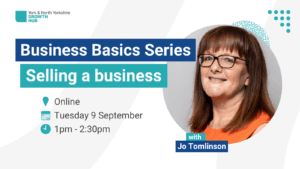
Choosing your online marketing channels
To help you make the right choices for your business, let’s go over some of the options available to you. It’s important to consider the pros and cons for each marketing channel and whether the channel is a good fit with your target audience.
Email marketing
There’s often confusion about whether email is inbound or outbound marketing. The truth is it can be both. Inbound email marketing relies on having an opt-in list of contacts, where individuals choose to receive value and learn more about your products and services. This provides an excellent opportunity to nurture lasting relationships that can lead to conversions. On the other hand, outbound marketing involves purchasing an email list, which can be less effective and may even damage trust with potential customers.
Organic social media
Many businesses are on at least one social media platform nowadays. To optimise your business social media profiles, use keywords, a clear logo as your display picture, and a solid about section. While social media for small businesses can be highly effective, delivering consistent, valuable content and engaging with your audience can be time-consuming. Consider outsourcing planning, content creation, and scheduling to focus on engaging with your followers.
Paid social media
When businesses pay money to platforms like Facebook, LinkedIn, Twitter, or others, it’s called paid social media. This approach offers better audience targeting, higher visibility, and, with the right content, increased traffic to your website or e-commerce platform. However, it can quickly become expensive and requires careful monitoring, testing, and adjustment of paid campaigns.
Google Ads
Google Ads offers three types of ads: search network campaigns, display network campaigns, and video campaigns. Each serves a specific purpose, and strategic keyword bidding is crucial for success. While it can be effective, managing and optimising Google Ads campaigns demand attention to detail and strategic planning.
SEO (search engine optimisation)
SEO involves improving your website to rank higher in search engine results. Optimising your online content helps increase the right kind of traffic to your website, leading to potential sales. However, SEO requires regular maintenance for optimal results and is a long-term investment.
Blogging
Adding a blog to your website can effectively communicate value, brand identity, and increase website traffic. Creating a blog plan aligned with your digital marketing strategy is crucial. Generating blog topic ideas can be inspired by keyword research or direct audience feedback.
Video marketing
Video marketing, if done right, can offer value, build trust, credibility, and grow your audience. With the right setup, video marketing is more accessible than ever, with many small businesses shooting on their mobile phones. Creating valuable and engaging content is key to keeping your audience interested.
Digital PR
Digital PR focuses on guiding the public narrative around your brand. Positive actions, such as community involvement, charity work, or support for local causes, can generate positive chatter around your business. However, you have limited control over the content published, making it challenging to measure return on investment.
Learn more
Business Basics – Selling a Business or Shares in a Business
Being aware of your business's value enables you to determine a fair selling price for some or all of your shares and negotiate efficiently with prospective buyers. But where do you find a buyer for your shares, and what happens now?
Steps into Digital Programme
The Steps into Digital programme focusses on strategic, guided steps toward adopting the right digital tools and practices for your business. Emphasising a supportive, paced approach to digital transformation, accessible and manageable to all at any level.
Networking events: 10 tips for success
Not all networking events are created equal, so researching the different types might be a good starting point.
Choosing your online marketing channels
To help you make the right choices for your business, let’s go over some of the options available to you. It’s important to consider the pros and cons for each
How to create a profitable website and generate leads
Learn how to create a profitable website that can serve as a powerful tool to attract customers, generate leads, and increase revenue.
How to Sell Goods or Services to the Public Sector
Increase your customer base and increase revenue by learning how to successfully sell goods or services to the public sector with our expert advice.
Marketing for start-ups: A beginner’s guide
Marketing for start-ups can leave your head spinning, especially if marketing is new to you. Here’s a quick and easy guide to getting started with marketing for start-ups. How to
Customer relationship management tools
There are lots of great customer relationship management (CRM) tools out there that you could use in your business.
Ten questions to ask a website designer
A high-quality website is a vital piece of your overall marketing puzzle.
Marketing tips for small business owners
Put simply, ‘marketing’ is the selling of a product or service to a target audience...
Customer loyalty and how do I build it?
Customer loyalty means getting your existing customers to make another purchase.
Writing a press release for your business
Writing a press release can be a great way to get free publicity for your business.











